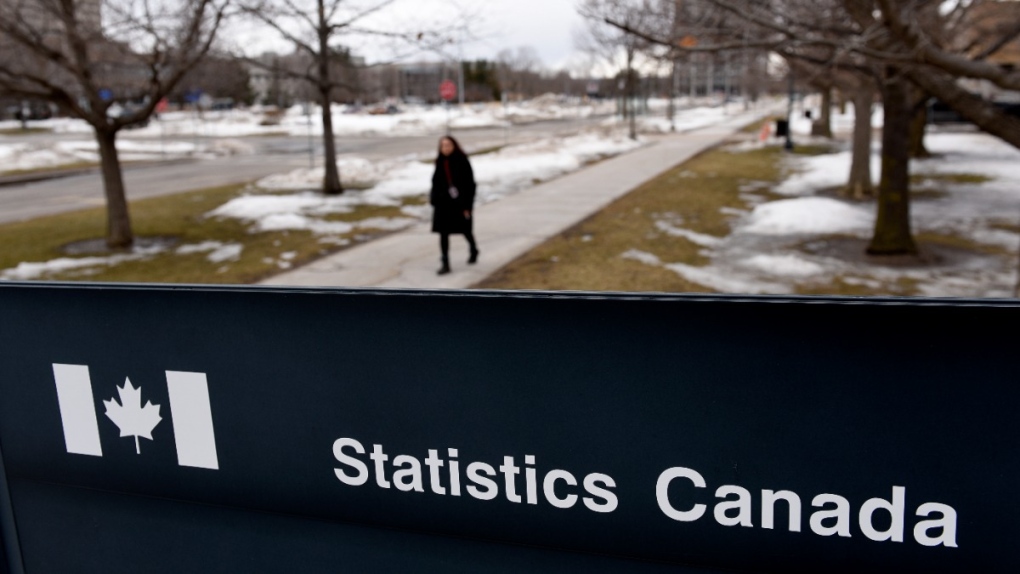
AS IT HAPPENED Wildfire reaches Jasper Wednesday night, causes 'significant loss'
One of two wildfires threatening Jasper National Park reached the townsite Wednesday night and caused 'significant loss.'
Canada's annual inflation rate fell to 4.3 per cent in March as higher mortgage interest costs were offset by lower energy prices.
Statistics Canada reported Tuesday that inflation slowed from 5.2 per cent in February, continuing along a downward trajectory that's expected to bring it down to three per cent by mid-year.
The continued slowdown in inflation since last summer has now brought the annual rate down to the lowest it's been since August 2021.
The slowdown comes as global prices pressures ease and high interest rates weigh on the economy.
But the deceleration hasn't brought much relief to homeowners with new mortgages or renewing their mortgages at high interest rates. Mortgage interest costs rose at the fastest pace on record last month, up 26.4 per cent from a year ago.
Grocery prices are also still rising rapidly, but at a slower pace. Grocery prices were up 9.7 per cent on a year-over-year basis in March, down from 10.6 per cent in February. Statistics Canada said the deceleration was driven by lower prices for fruits and vegetables.
The Bank of Canada's preferred measures of core inflation, which it uses to look through volatility in prices, also trended downward in March.
Inflation in Canada is expected to continue decelerating this year but the Bank of Canada has said it won't rest until inflation gets back to its two per cent target.
The central bank has signalled interest rates may have to stay higher for longer to get there.
According to its latest forecasts, the Bank of Canada is expecting inflation to return to its two per cent target by the end of 2024.
Here's what happened in the provinces (previous month in brackets):
The agency also released rates for major cities, but cautioned that figures may have fluctuated widely because they are based on small statistical samples (previous month in brackets):
This report by The Canadian Press was first published April 18, 2023

One of two wildfires threatening Jasper National Park reached the townsite Wednesday night and caused 'significant loss.'
Alberta has called in the Canadian Armed Forces to help assist with the worsening wildfire situation in the province.
U.S. President Joe Biden on Wednesday delivered a solemn call to voters to defend the country's democracy as he laid out in an Oval Office address his decision to drop his bid for reelection and throw his support behind Vice President Kamala Harris.
Staff at a Barrie child care centre say they are frustrated by what they call a local MPP's inadequate response after a car crashed through a window in one of the toddler rooms.
The North American Aerospace Defence Command (Norad) intercepted two Russian and two Chinese bombers flying near Alaska Wednesday in what appears to be the first time the two countries have been intercepted while operating together.
An analyst and an assistant coach with Canada Soccer are being removed from the Canadian Olympic Team and 'sent home immediately,' according to the Canadian Olympic Committee.
After a handful of Australian water polo players tested positive for COVID-19 this week, questions have emerged around how the spread of the disease will be mitigated at the Summer Olympic Games in Paris.
A B.C. man who was hired to help a non-profit build a food hub but instead spent the money on personal expenses – including travel, restaurants, booze and cannabis – has been ordered to pay more than $120,000 in damages.
Two people are dead and two others suffered serious injuries following a shooting that police have described as a 'gun battle' outside a plaza in Scarborough, Ont. early Wednesday morning.

A local First Nations elder and veteran is helping to bring the Ojibwe language to a well-known film for the first time.
A cat who fled her Montreal home nearly a decade ago has been reunited with her family after being found in Ottawa.
A woman in Waterloo, Ont. is out thousands of dollars for a car crash she wasn’t involved in.
A swarm of bees living in a lamppost in Winnipeg’s Sage Creek neighbourhood has found a new home for its hive.
Around 100 acres of Manitoba Crown Land near the Saskatchewan border is being returned to the Métis community.
Nova Scotia is suspending the licensed Cape Breton moose hunt for three years due to what the province is calling a “significant drop” in the population.
A well-known childhood prank known as 'nicky nicky nine doors,' or 'ding dong ditch,' has escalated into a more serious game that could lead to charges for some Surrey, B.C. teens.
It's been more than a month since their good friend was seriously hurt in an accident and two teens from Riverview, N.B., are still having a hard time dealing with it.
Halifax bridges have collected thousands of coins from around the world.
 A sign outside a building at Statistics Canada is seen in Ottawa on March 12, 2021. (Justin Tang / THE CANADIAN PRESS)
A sign outside a building at Statistics Canada is seen in Ottawa on March 12, 2021. (Justin Tang / THE CANADIAN PRESS)